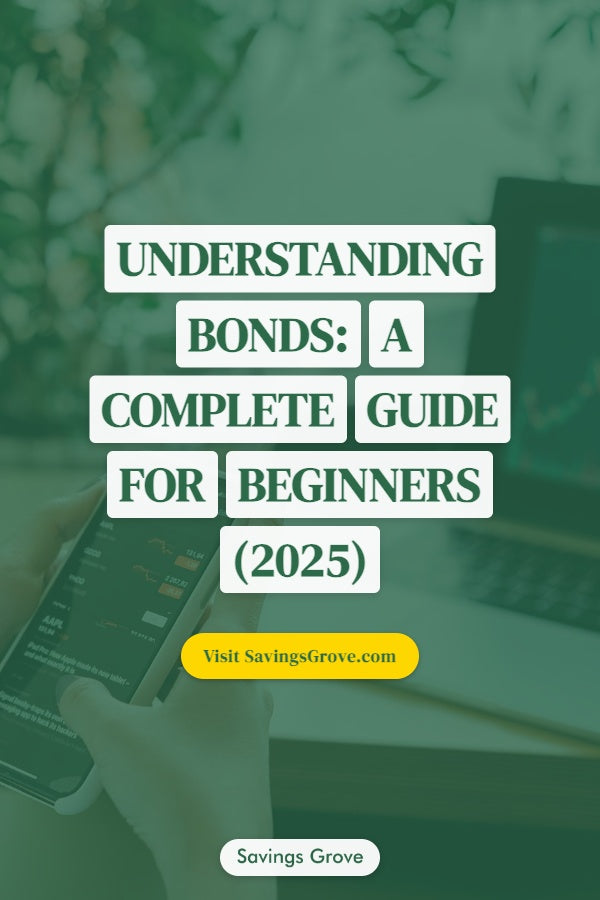
With high interest rates and market volatility in 2025, bonds have become increasingly attractive investments. This guide explores why bonds deserve a place in your portfolio and how to get started.
What Are Bonds?
Bonds are fixed-income investments where you lend money to an issuer in exchange for regular interest payments and the return of your principal. In 2025's economic climate, bonds offer both stability and competitive yields.
Current Bond Market Opportunities (2025)
1. U.S. Treasury Bonds
Treasury bonds are offering their highest yields in over a decade. Series I Savings Bonds are paying 5.27% (as of early 2025), while 30-year Treasury bonds yield 4.75%. A $10,000 investment in a 30-year Treasury would generate $475 annually in guaranteed interest.
2. Corporate Bonds
High-grade corporate bonds from companies like Johnson & Johnson (JNJ) or Microsoft (MSFT) are yielding 5.5-6.5% in 2025. For example, a $5,000 investment in a 5-year AA-rated corporate bond at 6% yields $300 annually.
3. Municipal Bonds
Tax-free municipal bonds are particularly attractive in 2025's high-tax environment. A AAA-rated municipal bond yielding 4% tax-free equals a 6.67% taxable yield for investors in the 40% tax bracket. A $20,000 investment provides $800 in tax-free annual income.
Why Bonds Make Sense in 2025
- Higher Yields: Bond yields are at their highest levels since 2008
- Recession Protection: Government bonds typically perform well during economic uncertainty
- Lower Risk: Bonds offer stability while stock markets remain volatile
- Tax Advantages: Municipal bonds provide tax-free income when tax rates may increase
Investment Options for 2025
- Series I Bonds: 5.27% yield, inflation protection, $10,000 annual limit
- Bond ETFs: iShares Core U.S. Aggregate Bond ETF (AGG), expense ratio 0.03%
- Bond Mutual Funds: Vanguard Total Bond Market Index Fund (VBTLX), minimum $3,000
Getting Started
Before investing in bonds, explore different platforms and tools. Our 2025 investment apps guide reviews the best platforms for bond trading. To build your investment capital, check out proven ways to save money.
Track your bond investments effectively with these recommended expense tracking apps, which help monitor yields and maturities.
Sample Bond Portfolio for 2025
-
Conservative ($50,000):
- $20,000 in Treasury Bonds (4.75%) = $950/year
- $20,000 in Municipal Bonds (4% tax-free) = $800/year
- $10,000 in I Bonds (5.27%) = $527/year
-
Balanced ($25,000):
- $10,000 in Corporate Bonds (6%) = $600/year
- $10,000 in Treasury Bonds (4.75%) = $475/year
- $5,000 in Bond ETFs (4.5%) = $225/year
Final Words
2025's economic conditions make bonds particularly attractive for both income and stability. High yields, combined with potential recession concerns, create an opportune time to add bonds to your investment strategy. Start with Treasury Direct for government bonds or major brokers for corporate and municipal bonds.
Related Articles
Frequently Asked Questions About Bonds
Are bonds a safe investment?
Generally, bonds are considered safer than stocks, especially government bonds. However, risk levels vary by type. U.S. Treasury bonds are considered the safest, while corporate bonds carry more risk but offer higher potential returns.
How do bond yields work?
Bond yields represent the return on your investment, typically expressed as a percentage. There are two types: coupon yield (fixed interest payments) and yield to maturity (total return if held until maturity, including interest and any difference between purchase price and face value).
What happens to bonds when interest rates rise?
When interest rates rise, existing bond prices typically fall because newer bonds offer higher yields. This inverse relationship is fundamental to bond investing. However, if you hold a bond to maturity, you'll still receive the promised interest payments and principal repayment.
What's the minimum amount needed to invest in bonds?
The minimum investment varies by bond type. U.S. Treasury bonds can be purchased for as little as $100, while corporate bonds typically require minimum investments of $1,000 to $5,000. Bond mutual funds and ETFs often have lower minimums, sometimes as little as $50-$100.

